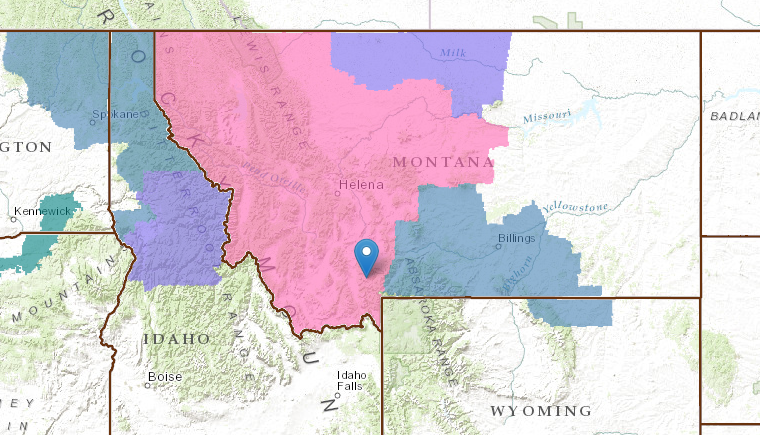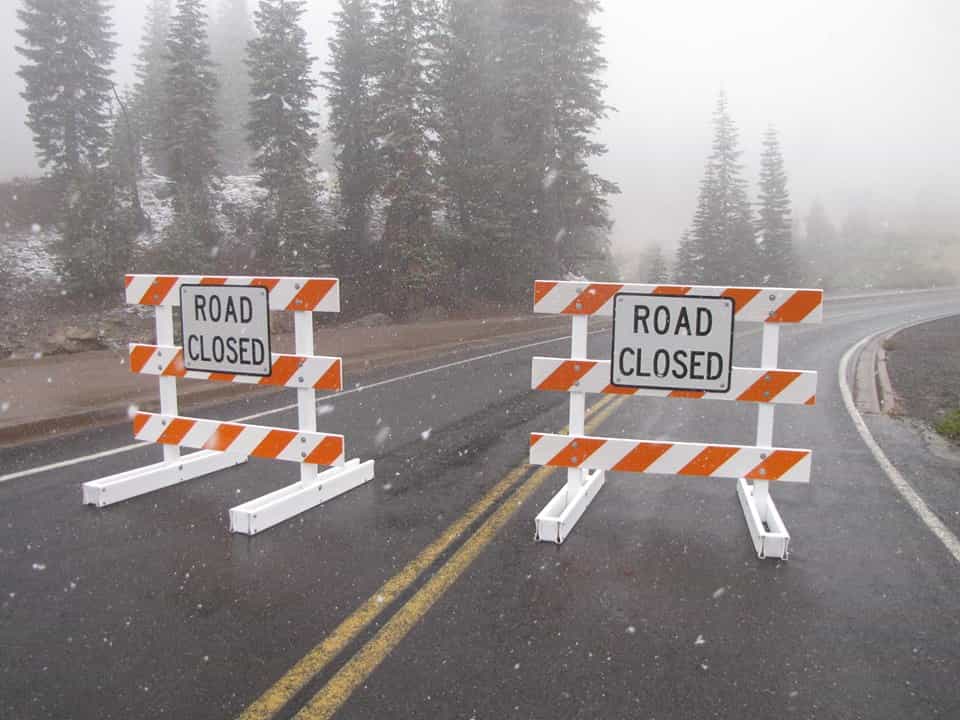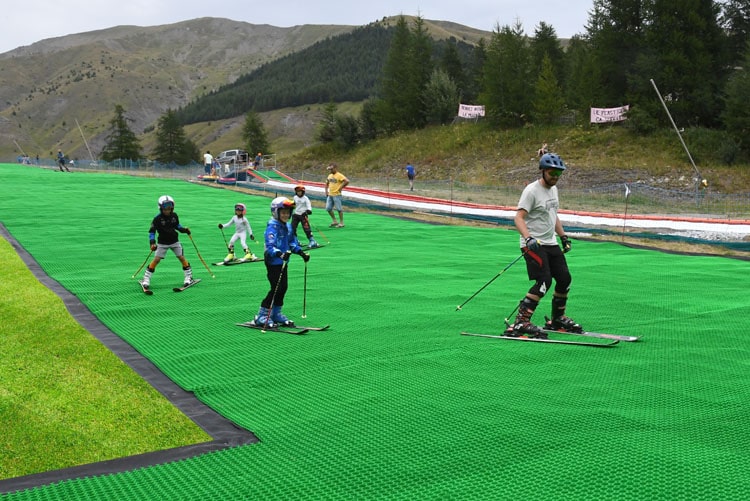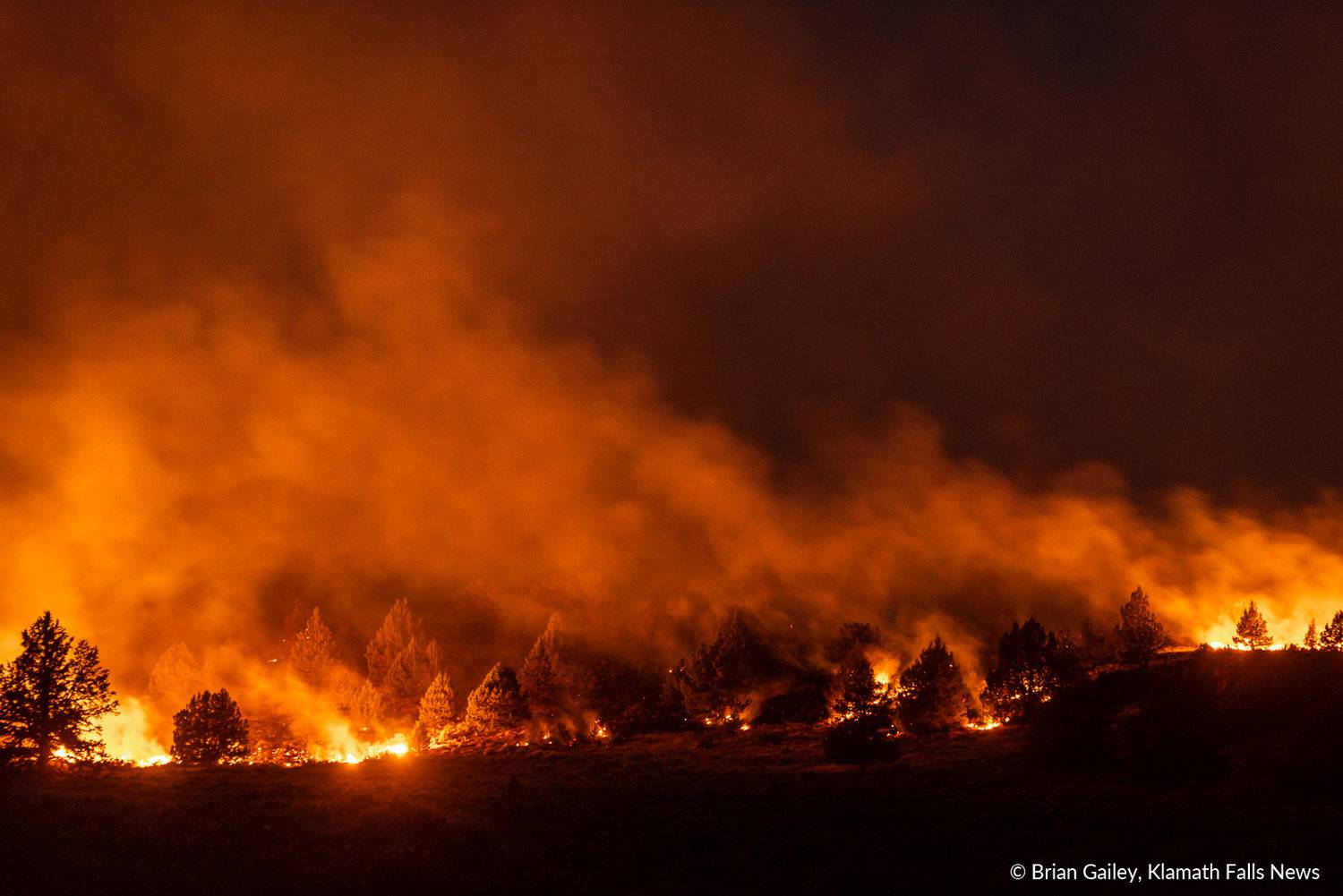
Six new blazes have taken the number of large wildfires raging across the western US and Alaska to 105, burning almost 2 million acres. 11 states are currently reporting large active fires. Alaska reports seventy, Arizona reports eight, New Mexico six, Idaho and Washington four each, Colorado, Utah, and Montana reporting three, California two, and Oregon and Texas report one each, according to the National Interagency Fire Center.
Over the last 24-hours, eight fires were contained. The more than 1,770,000 acres which have burned remains well below the 10-year average of over 3,800,000 acres. Firefighters are continuing to make progress on the wildland fire activity in Alaska. There are currently over 2,000 active fires in total across the western US and Alaska.
A wildfire in California near the Oregon border suddenly exploded to nearly 13,000 acres Tuesday morning, as heavy winds fanned the flames, officials said. The Tucker Fire started Sunday at Highway 139 and Tucker Butte Road in Modoc County, six miles southwest of Clear Lake Reservoir, according to Cal Fire. Crews from several rural agencies are battling the blaze as Modoc National Forest Service investigates the cause.
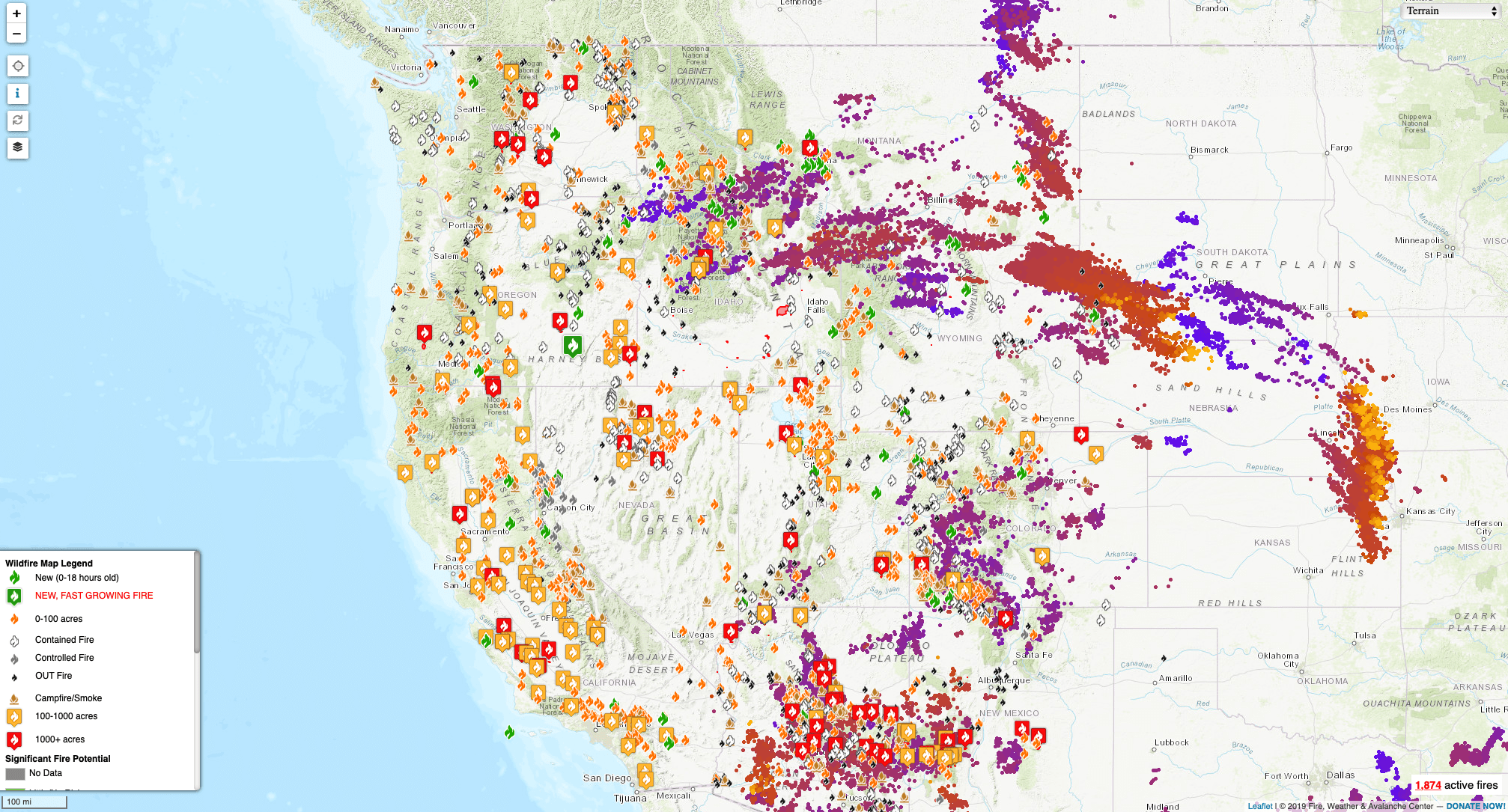
It appears a vehicle sparked the fire, said Ken Sandusky, a U.S. Forest Service spokesman. Officials are still poring over the details, but they suspect the blaze “unintentional.” So far, the fire hasn’t burned any structures or threatened any homes, and no evacuations have been ordered.
According to the NIFC, a dry southwesterly flow will be in place across most of the West, as the Four Corners high-pressure area migrates a bit further east to be located over Colorado and New Mexico. Monsoonal storm activity will mostly be focused over Arizona, Colorado, and Utah with wet storms. Isolated storms are also expected across eastern Nevada and the desert of southern California. A cold front moving east from the Mississippi River will bring scattered showers and storms from western New York State south to the Gulf Coast. In Alaska, high pressure will weaken over the state, allowing for a strong and wet front to move onshore from the northern Bering Sea. Cooler temperatures will allow precipitation to mix with snow in the western portions of the Brooks Range.

